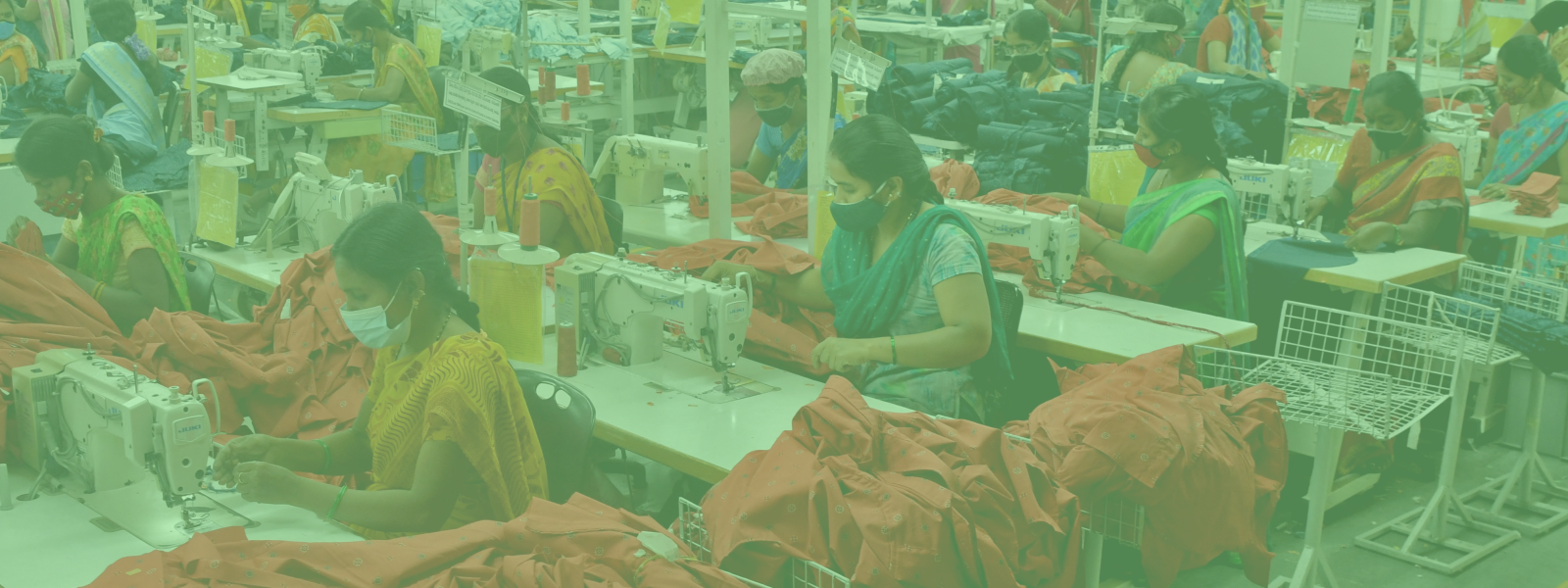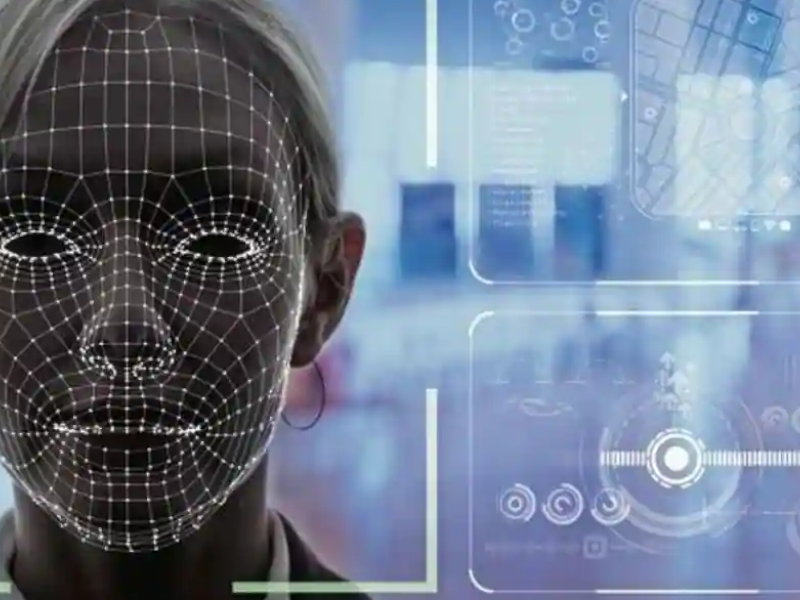The global market for garments (textile, garment, shoes and leather goods taken together) has been changing fast over the last decade, and so has its supply chain, but the pandemic pushed the industry to increase its pace of change. To adapt to the COVID-19 lockdowns, increase in cost of raw material and rising shipping costs due to the disrupted supply lines, global companies expanded their online sales. With more and more people working from home, there has also been a change in the demand pattern – demand for formal clothes declined with an increase in demand for casual garments. Fast fashion trends pushed by the companies also meant the nature of orders changed – manufacturers were expected to produce in smaller batches and with shorter lead time (delivery time). Trade fairs and fashion shows have gone online saving both time and cost substantially. In design, digital technology has increased the speed of the approval process between retailers and manufacturers; tightening controls on production planning has improved flexibility and speed.
How does Digitalisation look like in a garment factory?
Digitalisation is not a single technology that can be implemented, but it is a wider transformation of work through technological and organisational changes, both small and big, visible and invisible on the shopfloor. Neither is it just about the introduction of big machines, robots or full-automation of work. This can be a part of it but fundamentally digitalisation is about small changes towards standardisation, fragmentation and rationalisation of production processes, digital collection and analysis of all data regarding these changes in order to reorganise work, minimise costs and increase output and productivity per worker. This digital transformation has significant implications in changing working conditions and therefore changing employment and workplace relations.
Digitalisation of the garment supply chain means different things for retailers and for manufacturers. Both have separate interests to fulfill through digitalisation. While retailers (especially the dominant global garment multinationals) want to know how their outsourced manufacturers are functioning and digitally control and tighten their control over them, manufacturers are going digital to increase flexibility, productivity and greater control over their workers. The extent of digitalisation will vary and depend on several factors – from region to region, size of the company, capacity to invest, profitability, integration in the global market and competitive advantage, and available technical capacity. This is leading to restructuring of the industry itself – with small manufacturers being pushed out of the market and large manufacturers consolidating their gains and expanding in the global south.
Garment manufacturing is already using a range of software programmes at various stages of production beginning from production planning to its final product delivery. Large companies are investing in intelligent planning systems (Fast React Systems) that plans all processes within minutes using a customised algorithms. Today software can create a digital image of the production floor and standardise production planning and processes. Companies are increasingly integrating tracking and tracing technology to tighten their control over the entire production process from the moment materials enter the facility till the final product leaves the facility. The extent and spread of digitalisation in South Asia is still quite uneven and limited to large producers.
What will be the impact of these changes on workers?
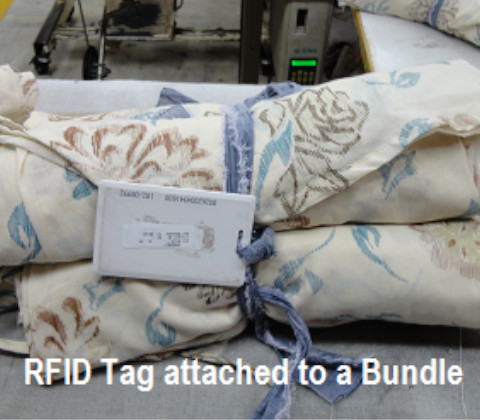
Let us take the example of one technology that is the simplest and most ubiquitously used at this point in garment manufacturing – RFID [Radio Frequency Identification] tags. The fabric roll gets tagged with a RFID tag (see image) as it enters the factory gate. From here as that fabric moves from one department to another, from one worker to another, each performing different processes at each stage, the tag keeps moving along the production process, till it reaches packaging where it goes into the cartons ready to ship.
What does this technology do? All order data is first entered into a software and this data copied on to the RFID chips. Each task gets entered into the RFID chip through the production process using a smart tracker. With this information at every point, supervisors are able to detect delays, identify workers responsible for the delay, and intervene – which on a shopfloor translates to isolation of workers, harassment and pressure. Further, with this data, supervisors can push production targets.
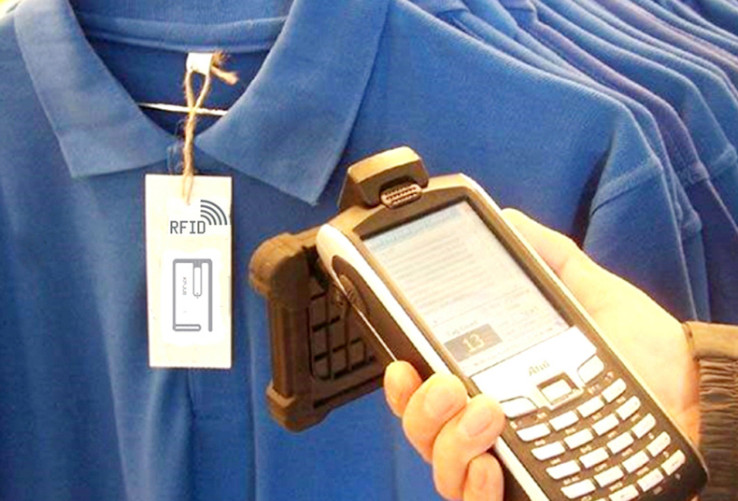
If one line is able to finish X pieces in one hour, and other lines are only able to finish (X-10) pieces in the same time, this data is used by supervisors to push the target even as the day progresses. This kind of monitoring without human intervention leads to more psychological pressure on the workers. This also makes it more difficult for workers to engage in any form of covert industrial action as it would get immediately noticed and the workers involved identified. Thus, what this technology primarily achieves is increasing the control over the workplace manifold and hence also over the workers. The already skewed power balance between the employer and the workers, gets further tilted in favour of the employers.
To give another example – the software that plans the organisation of the shopfloor designs the shopfloor in such a manner that, work flows continuously from one worker to the next one in a way that it gets individualised and there is minimal or no interaction amongst workers. This is often done through the use of kaizen, the Japanese term for continuous improvement. In the image, you can see that the worker lines are separated by the moving line bringing the cloth bundles that are to be stitched by the workers on both sides. As this moving line never stops feeding bundles, workers have to continually keep picking up work as they finish one and pass it on with no time for break. Both the process of picking up and passing on are recorded through the RFID chip. This puts the workers are under continuous pressure to speed up, in the fear of slowing down. Further this process is motivated by fear, and not by a supervisor and as a result individual workers begin to compete against each other in fear of producing less than the other. The outcome – employers make more profit while workers get isolated from one and another and more physically and mentally drained.
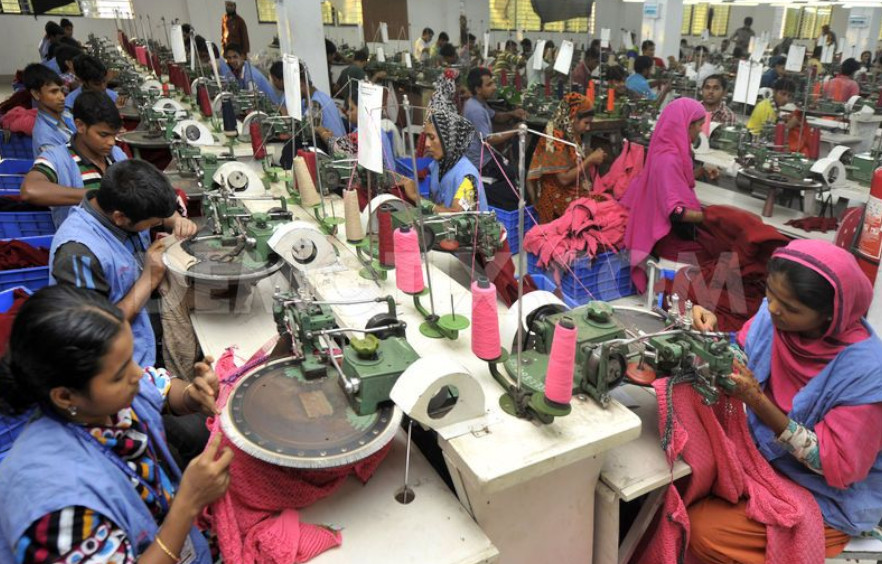
Finally, let us take the example of the jacquard machine which simplifies and automates complex process. In Bangladesh, when this was first introduced it replaced 10 workers with one machine operator. In the next round, the same machine operator was made to operate 2 machines and today in most factories, 1 jacquard operator operates 3-4 machines. This means, one worker today is able to perform the work of 30 to 40 workers while simultaneously producing more than what the 40 workers could originally produce. This can more than double worker productivity and contribute to a quantum leap in profit for the employer while a huge loss of jobs for workers. Further, by cutting the number of workers, employers have successfully crushed the worker protests at the sweater manufacturing factories across the country. Workers currently employed in these factories are more precarious and scared than ever before. Workers forming or joining unions becomes next to impossible with a large number of workers unemployed and willing to replace them any moment.
How can workers intervene in this process of digitalisation?
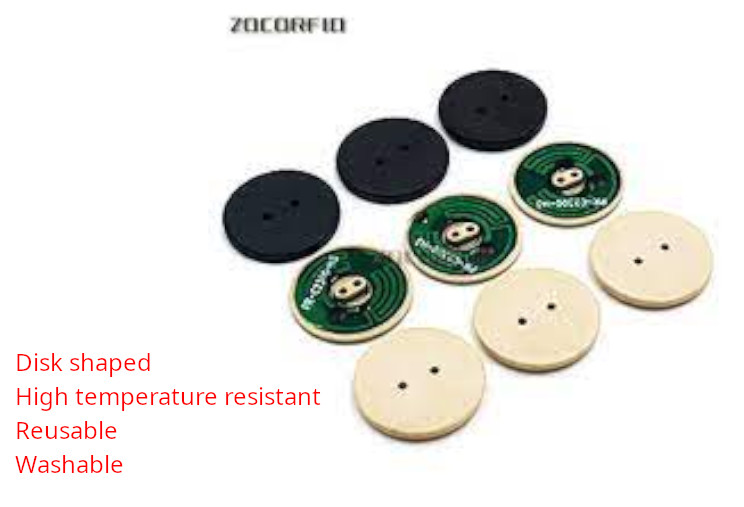
The digitalisation of our industry demands a digitally-informed response from unions. This is also not the first time that workers and unions have to respond to a rapid introduction of new technology. However, collective bargaining usually lags behind technological change as workers and their trade unions react slowly to structural change. This often leads to a lack of involvement of trade unions in the early stages of technological change. At the root of this problem, however, is not the inertia of the trade unions – it is the desire of employers to surreptitiously bypass trade unions. Sometimes employers also introduce changes claiming that new technology will make work easier and lighter for workers. Consequently, new technology is often introduced without workers either knowing about it or fully understanding the implications of it. For example, the RFID chip introduced to track progress on a shopfloor in most cases looks like a simple plastic disk, like the button in the image, that workers have to tie to their bundles at every stage. Workers are unaware of the implication of this innocuous button being introduced and hence unable to respond to as a change in working conditions. Under section 9A of the Industrial Disputes Act, employers are required to provide notice to all workers regarding any change in the conditions of work applicable to them. Yet employers violate this provision with impunity till workers raise it as an issue.
This kind of organised stealth can only be countered through continuous monitoring of the workplace by workers about any, even the smallest, change in their work practice. With trade unions, especially in the global south, submerged in struggles for the basic – a subsistence wage, protection against arbitrary and vindictive dismissals, social security, the daily connect with the shopfloor gets lost. Employers also make sure unions have limited, if any, access to the shopfloor, putting in place continuous practices to intimidate workers so they do not join unions, and finally bury the unions in disputes so that they do not find the time to monitor changes that employers introduce. However constant shopfloor monitoring by unions is not impossible. This requires an active membership of the union on the shopfloor with a democratic leadership that respects every worker and their ability to understand work processes. This is a time consuming process and needs to be done continuously, which may makes it at times tedious. By involving more and more workers in daily union activities, especially the young workers, trade unions can bridge this gap. Younger workers with better understanding of technology are usually able to detect technological changes faster than older workers. This will also help bridge the age gap that plagues trade unions today.
Sometimes this monitoring also requires creativity – an anticipation of change. Before any change is introduced, employers often test the water by discussing possibilities of change or threaten workers with the impending change or organise trainings on new technology etc. These are signs of testing how workers react to these changes. To believe that these are empty exercises is a folly. Every action of an employer is measured both in terms of the cost of the action itself and its implication. To believe in the benevolence of employer is to believe that Business is Charity.

